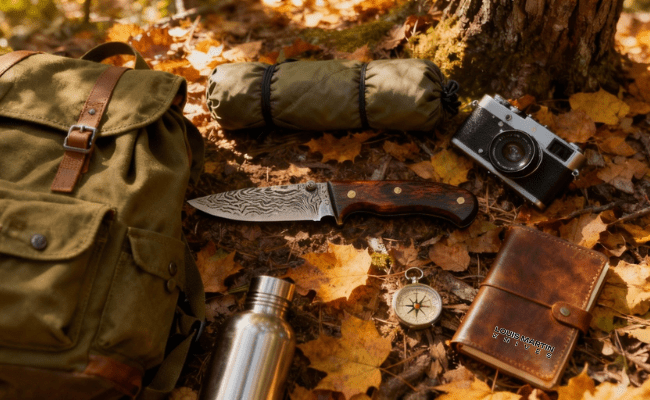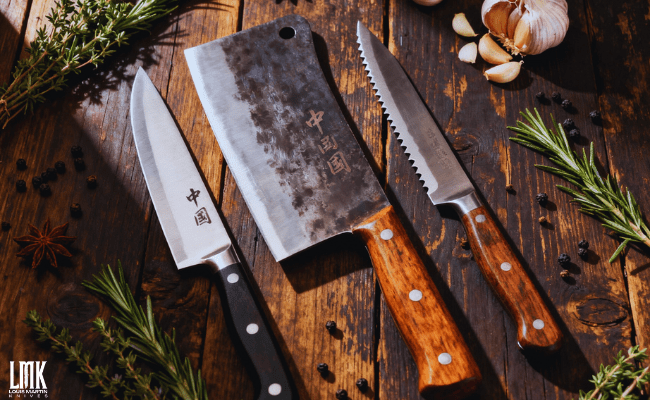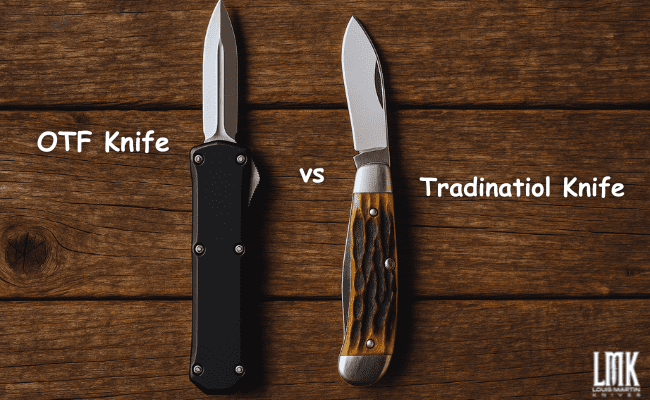Butterfly knives, also known as balisongs, are a unique type of folding knife with two handles that rotate around the blade. These knives have been around for centuries, originally used as tools and weapons in the Philippines. However, in many parts of the United States, butterfly knives are illegal or heavily restricted. But why? What makes these knives so controversial? This article will explore the reasons why some states have banned butterfly knives and the laws surrounding their use.
Butterfly knives are banned in some states due to safety concerns and criminal associations. Learn why laws restrict these blades and how Custom Knives enthusiasts navigate regulations.
What Is a Butterfly Knife?
A butterfly knife is a type of folding knife with a distinct design. Unlike traditional pocket knives, a butterfly knife has two handles that swing open to reveal the blade. This unique mechanism allows for quick deployment, making it a favorite among knife enthusiasts and trick performers.
Historically, butterfly knives originated in the Philippines, where they were used as both utility tools and self-defense weapons. Over time, they became popular in the United States, especially among collectors and martial arts practitioners. Today, they are often seen in movies and videos where people perform intricate flipping tricks. Despite their appeal, many states consider them dangerous and have enacted strict laws against their possession and use.
The Perception of Butterfly Knives as Dangerous Weapons
One of the main reasons butterfly knives are illegal in some states is their perceived danger. Several factors contribute to this reputation:
- Association with Crime: Over the years, butterfly knives have been linked to criminal activity, particularly in gang violence. Their quick deployment and intimidating appearance have made them a weapon of choice for some criminals, leading lawmakers to ban or restrict them.
- Media Influence: Movies and television shows often portray butterfly knives as weapons used by villains or gang members. This portrayal has contributed to public fear and misunderstanding, reinforcing the idea that these knives are primarily used for illegal activities.
- Ease of Concealment: Because of their folding design, butterfly knives can be easily hidden in pockets or clothing. Law enforcement agencies argue that this makes them particularly dangerous, as they can be used in surprise attacks.
State Laws and Legal Restrictions
Knife laws in the U.S. vary significantly from state to state. While some states allow butterfly knives without restrictions, others have banned them entirely. In some areas, owning a butterfly knife is legal, but carrying one in public is not.
For example, are butterfly knives illegal in NC (North Carolina)? The answer is somewhat complicated. In North Carolina, butterfly knives are legal to own, but carrying them concealed is prohibited without a proper permit. This means that while collectors can purchase and display them, carrying one in a pocket or hidden under clothing could lead to legal trouble.
Other states, such as California, Hawaii, and New York, have outright bans on butterfly knives. In these states, possession, sale, and distribution of butterfly knives are completely illegal. The reasoning behind these bans often stems from concerns about public safety and crime prevention.
The Reasoning Behind the Bans
Several key reasons are often cited when states justify banning butterfly knives:
- Public Safety Concerns: Butterfly knives require skill to handle safely. Without proper training, users can easily injure themselves or others. Lawmakers argue that restricting access to these knives helps prevent accidental injuries and reckless use.
- Comparison to Switchblades: Many states categorize butterfly knives in the same category as switchblades, which are also banned in several places. Since both types of knives allow for rapid deployment, they are often treated similarly under the law.
- Law Enforcement Perspective: Police officers often view butterfly knives as weapons rather than tools. Since they are commonly associated with violent crimes, law enforcement agencies support stricter regulations.
Arguments for and Against the Ban
Arguments in Favor of the Ban:
- Helps reduce crime and violence.
- Prevents accidental injuries, especially among inexperienced users.
- Keeps dangerous weapons off the streets.
Arguments Against the Ban:
- Most butterfly knife owners are hobbyists, not criminals.
- Many legal knives have similar capabilities but are not banned.
- Bans create inconsistencies in knife laws, making enforcement difficult.
How to Legally Own a Butterfly Knife
If you’re interested in owning a butterfly knife, it’s crucial to research local laws. Here are some tips to stay within legal boundaries:
- Check State and Local Laws: Always verify whether butterfly knives are legal in your state or city. Laws can change, so staying updated is important.
- Know the Difference Between Ownership and Carrying: Some states allow possession but not concealed carry. Understanding this distinction can prevent legal trouble.
- Consider Trainer Knives: If you’re interested in flipping tricks but live where butterfly knives are illegal, trainer knives (dull, non-sharpened versions) may be a legal alternative.
The Future of Butterfly Knife Laws
Knife laws in the U.S. are constantly evolving. Recently, some states have loosened restrictions on butterfly knives, recognizing that many owners are enthusiasts rather than criminals. Advocacy groups continue to push for more reasonable regulations, arguing that bans unfairly target law-abiding citizens.
For those who want to stay informed, checking legal resources and following advocacy groups can help track any changes in legislation.
Conclusion
Butterfly knives are illegal in some states due to concerns about crime, public safety, and their perceived dangerous nature. While some states impose strict bans, others allow ownership with specific restrictions. Understanding the laws in your area is essential if you plan to own or carry a butterfly knife. As legal debates continue, the future of butterfly knife restrictions remains uncertain, but for now, staying informed and compliant with the law is the best course of action.











